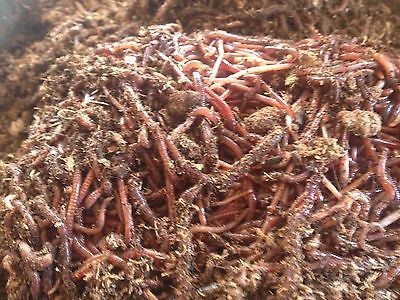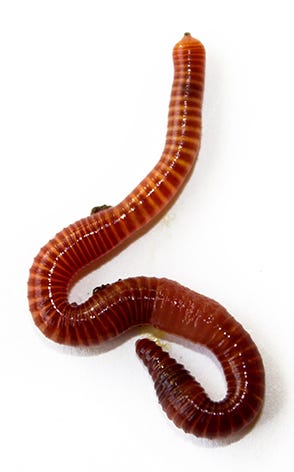Red wigglers: How to begin composting
Red wigglers: How to begin composting
Blog Article
The Function of Red Wigglers in Sustainable Gardening
The assimilation of red wigglers right into sustainable gardening practices offers an engaging technique to improving soil health and wellness and minimizing organic waste. The implications of making use of red wigglers prolong beyond plain composting; their duty in shaping a more lasting future warrants a deeper expedition of their benefits and practical applications.
Recognizing Red Wigglers
Red wigglers, clinically known as Eisenia fetida, are a varieties of earthworm renowned for their role in lasting gardening and composting practices - red wigglers. These worms prosper in breaking down raw material, making them specifically efficient in transforming kitchen area scraps and backyard waste into nutrient-rich garden compost. Unlike conventional earthworms, red wigglers have a greater tolerance for differing moisture degrees and can flourish in atmospheres with bountiful organic product
(redworms for composting)Typically, red wigglers are smaller sized than their earthworm equivalents, typically determining in between 3 to 4 inches in length. They have a reddish-brown coloration and have a segmented body structure that aids in their burrowing and feeding activities. These microorganisms are hermaphroditic, suggesting each specific has both male and female reproductive organs, which allows for reliable populace growth under optimal problems.
The habitat preferences of red wigglers include moist, dark settings abundant in organic web content, such as garden compost bins or worm ranches. Their eco-friendly function extends past composting; they are important in aerating the dirt and assisting in nutrition biking, which eventually adds to much healthier yard environments. red wigglers. Understanding the biology and actions of red wigglers is necessary for those seeking to apply efficient vermicomposting in sustainable horticulture
Advantages of Vermicomposting
Vermicomposting offers many advantages that boost sustainable horticulture methods and add to environmental wellness. One of the primary benefits is the makeover of organic waste right into nutrient-rich compost, which enhances dirt structure and fertility. The spreadings produced by red wigglers are packed with beneficial microbes and important nutrients, making them a superb natural fertilizer.
In addition, vermicomposting considerably lowers landfill waste. By diverting cooking area scraps and yard waste from garbage dumps, this technique not just minimizes methane discharges-- a powerful greenhouse gas-- yet also promotes a round economic climate, where waste is repurposed as a source.
An additional advantage is the enhancement of soil aeration and water drainage (red wigglers). The burrowing task of red wigglers creates channels in the soil, enabling air and water to permeate even more conveniently, thus fostering a healthier root system for plants
Additionally, vermicomposting can be done on a tiny range, making it available for metropolitan garden enthusiasts and those with minimal room. This method encourages environmental stewardship and awareness, as individuals become much more engaged with their waste administration methods. Eventually, vermicomposting represents a sustainable, efficient, and environment-friendly technique to horticulture that profits both plants and the world.
Exactly How to Start Vermicomposting
Starting your own vermicomposting system can be a rewarding undertaking that boosts your lasting horticulture methods. To begin, select an appropriate container, such as a plastic container or wood box, with great drainage and air flow. The dimension will depend on the quantity of kitchen area scraps you produce; a bin of 10-14 gallons typically is adequate for a house.
Next, prepare the bedding product. Shredded newspaper, cardboard, and coconut coir are outstanding alternatives, supplying a comfortable environment for the red wigglers. Go for a bed linen deepness of regarding 4-6 inches, which ought to be wet however not soggy.
When the bedding is developed, introduce your worms. Red wigglers (Eisenia fetida) are one of the most appropriate for composting. Beginning with around one pound of worms for each 2-3 extra pounds of kitchen scraps weekly.
Begin including kitchen waste, staying clear of meat, dairy, and oily foods, as these can bring in insects and develop odors. Regularly keep an eye on the bin's wetness degrees and temperature, guaranteeing it continues to be within the suitable range for worm activity. With these first steps, you'll be well on your method to developing nutrient-rich compost for your yard.
Keeping a Healthy Worm Container
A thriving worm container calls for consistent treatment and focus to maintain an ideal setting for the red wigglers. Trick elements to keep an eye on consist of moisture levels, temperature level, and food supply. Keeping a moisture level similar to a wrung-out sponge is critical; too much water can cause anaerobic problems, while also little can dehydrate the worms.
Temperature is likewise essential, as red wigglers thrive in a variety of 55 to 77 degrees Fahrenheit. Severe temperature levels can stress the worms, possibly bring about death. Placing the container in a climate-controlled location or making use of shielding materials can help regulate temperature fluctuations.

Lastly, aeration is important. On a regular basis turning the bed linen and utilizing a fork or shovel can protect against compaction and promote airflow, guaranteeing a healthy, successful atmosphere for the red wigglers. By sticking to these techniques, garden enthusiasts can maintain a productive worm bin that sustains sustainable gardening initiatives.
Effect On Dirt Health
Enhancing soil health and wellness through using red wigglers is a fundamental element of sustainable gardening. These worms, understood clinically as Eisenia fetida, play a crucial role in improving soil structure and fertility. By consuming raw material, red wigglers damage down intricate materials right into simpler compounds, a procedure called vermicomposting. Completion product, worm castings, is rich in vital nutrients, including nitrogen, phosphorus, and potassium, which are important for plant growth.

(red wigglers eisenia fetida)Studies have actually revealed that soils enhanced with worm castings exhibit raised microbial activity and improved fertility, bring about higher crop returns. By incorporating red wigglers right into gardening practices, garden enthusiasts not only improve their soil yet likewise contribute to an extra sustainable farming system, emphasizing the interconnectedness of dirt health and ecological stewardship.

Final Thought
To conclude, red wigglers considerably contribute to sustainable horticulture with their reliable vermicomposting practices. Their ability to convert organic waste into nutrient-rich compost improves soil fertility and supports a diverse microbial environment. Their burrowing task improves soil oygenation and water retention, benefiting plant wellness. By promoting waste decrease and cultivating a round economic climate, red wigglers become essential components in environmentally friendly horticulture campaigns, emphasizing their essential duty in ecological sustainability.
Report this page